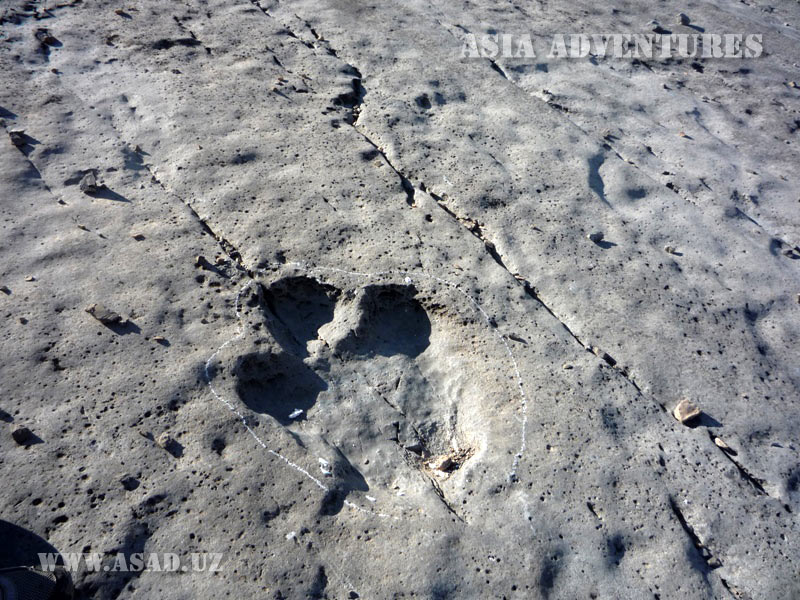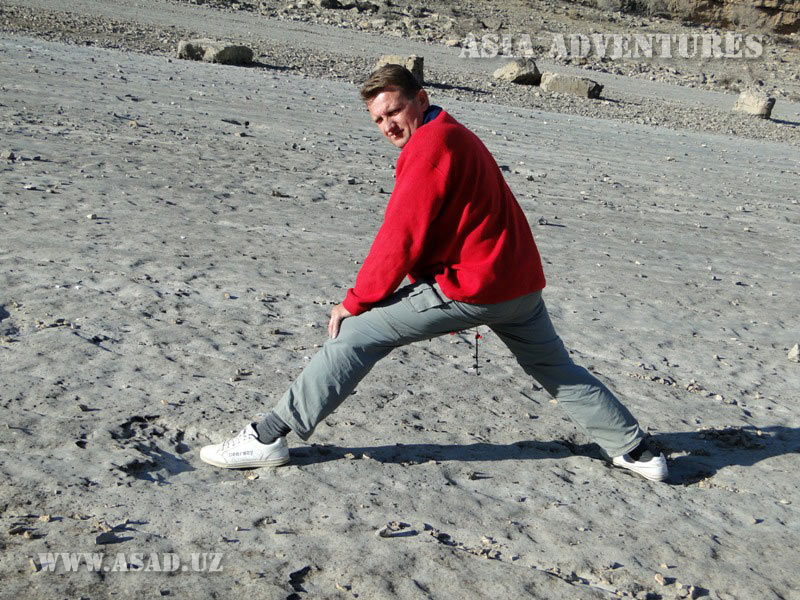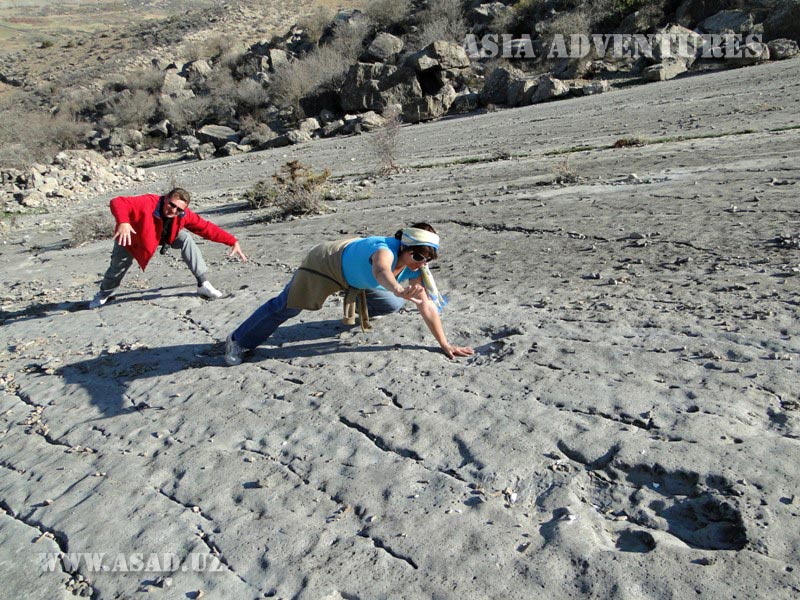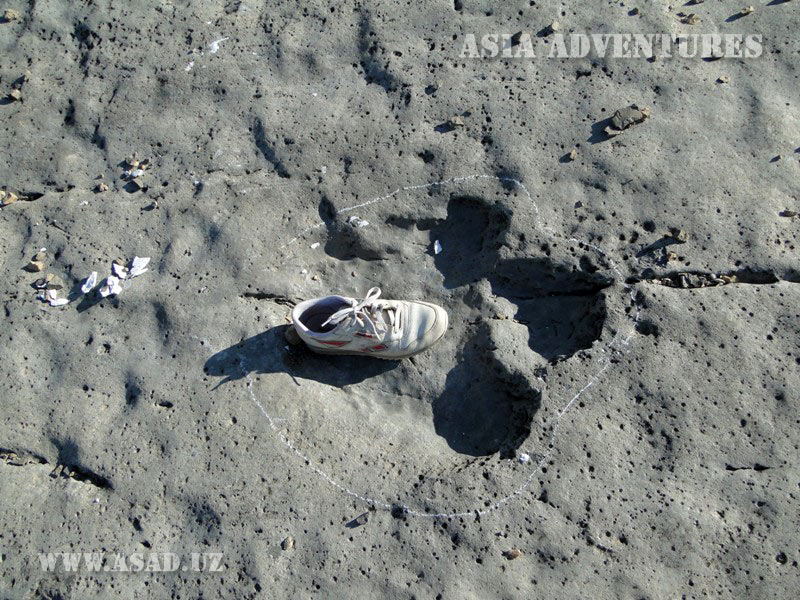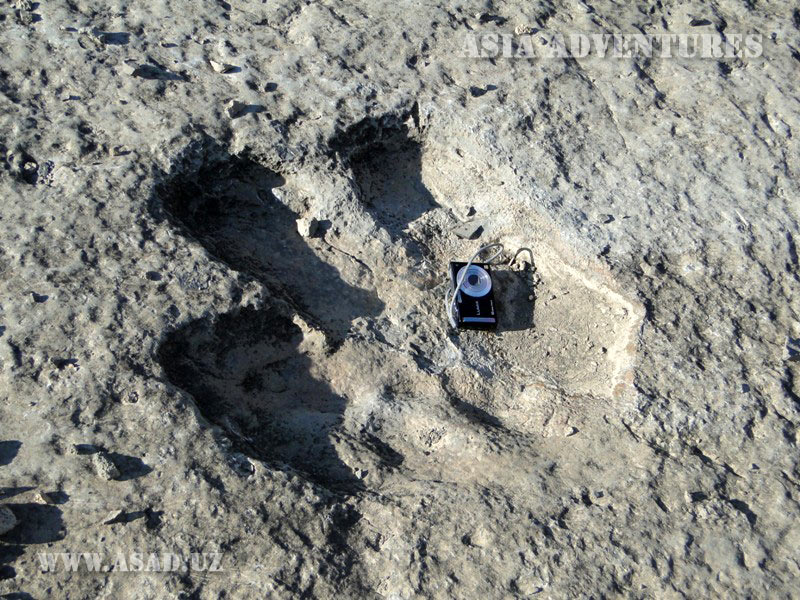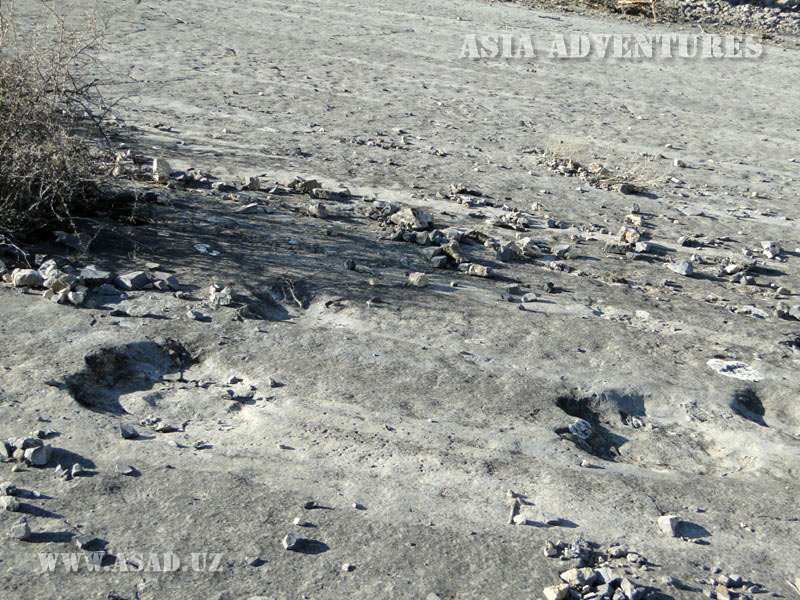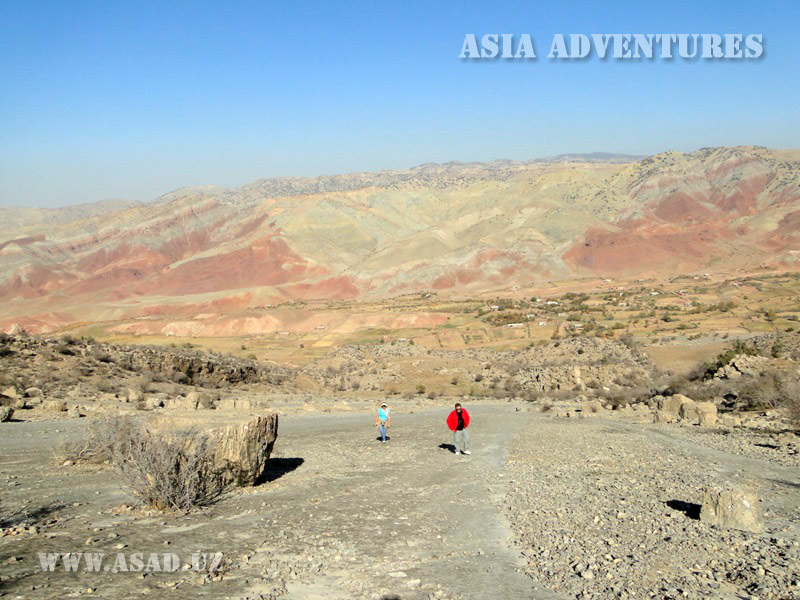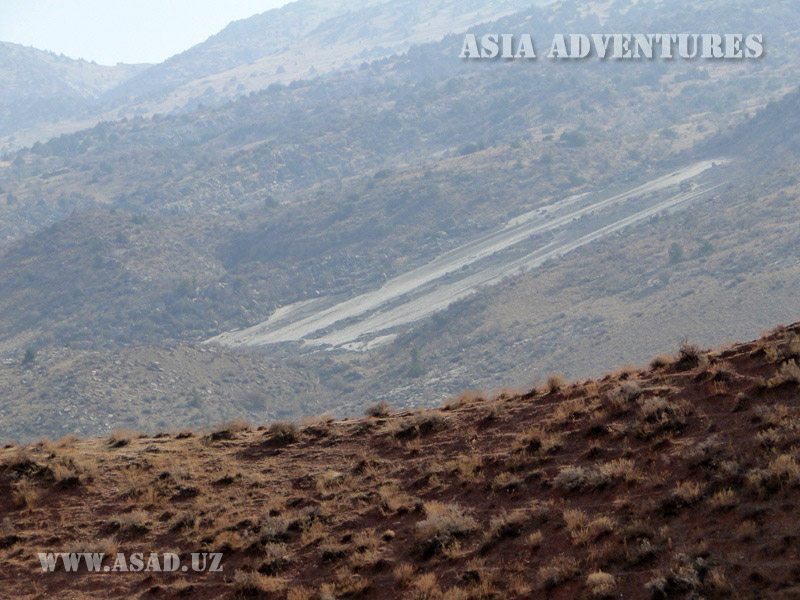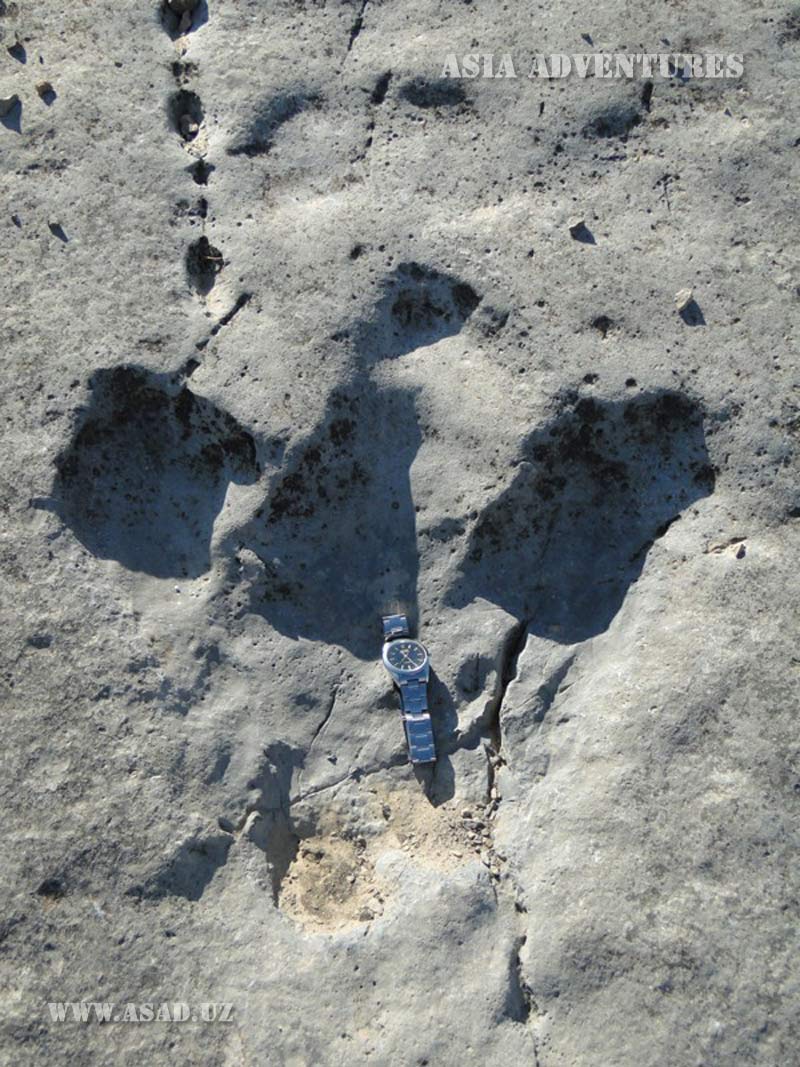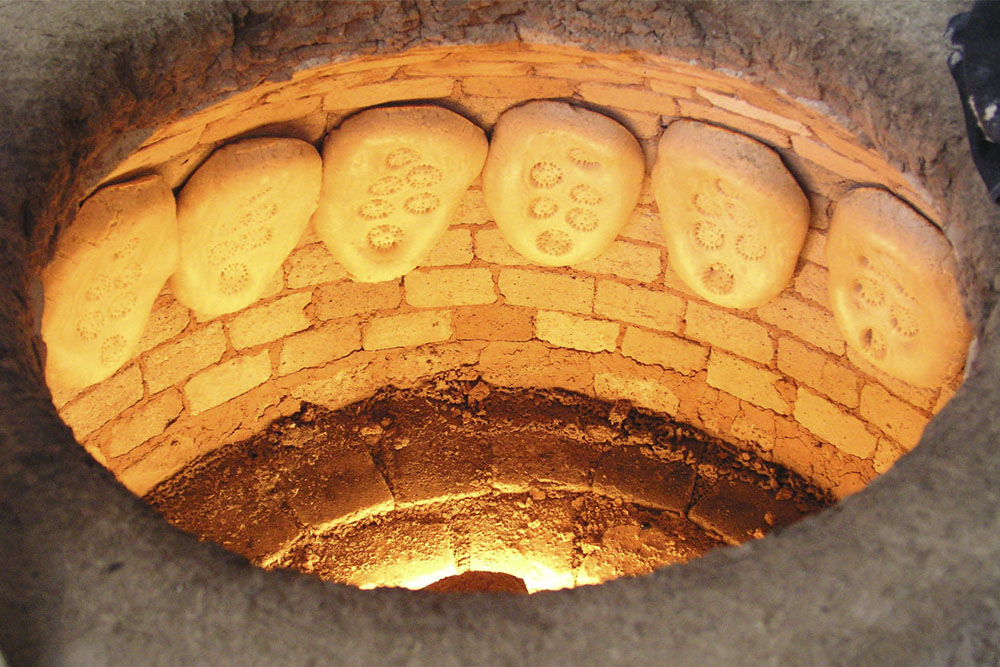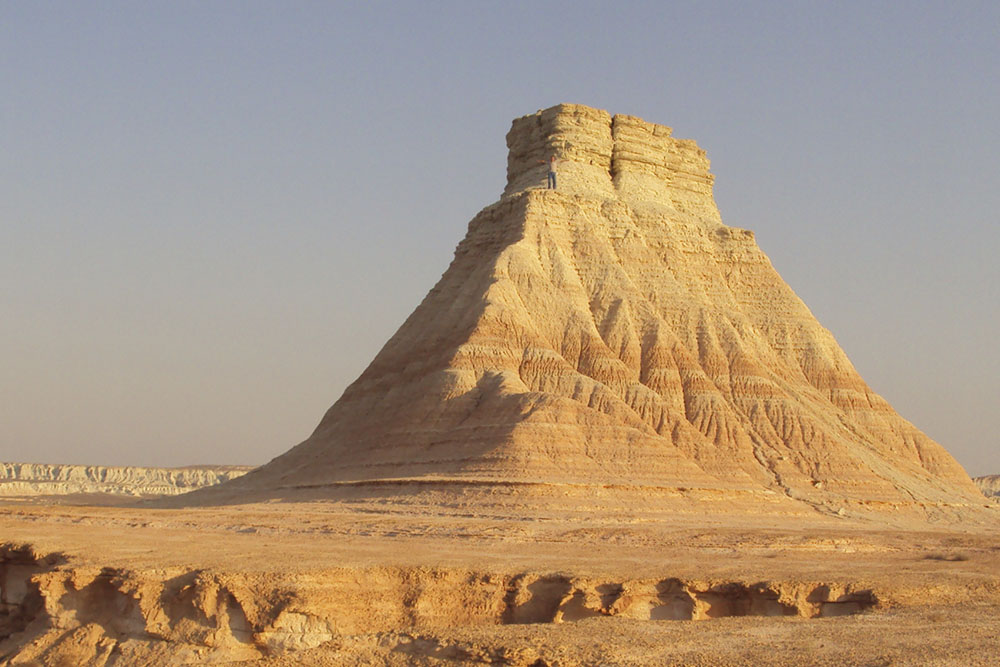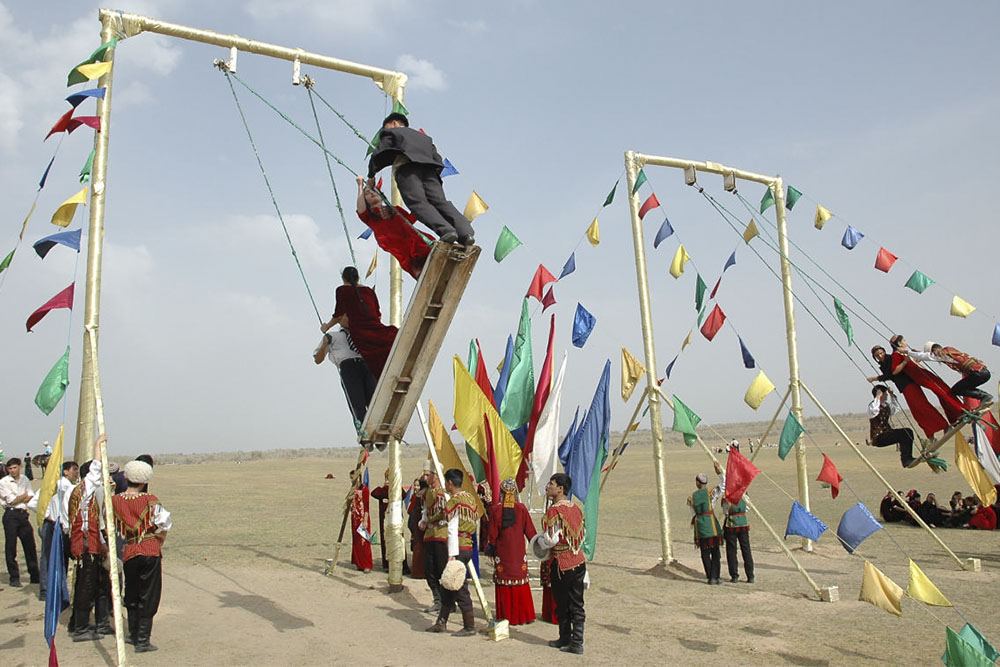The dinosaur Plateau is the name given to a rather large (~200 x 80m) inclined limestone slab with numerous dinosaur footprints.
This plateau is located near the village of Khojapil, which is lost in the Kugitang mountains (Koitendag in Turkmen). Administratively, this place is located in the Magdanli etrap of the Lebap viloyat (former Gaurdak district, Chardzhouz region) in the easternmost part of Turkmenistan on the border with Uzbekistan.
Scientists have counted more than 2 thousand footprints on the plateau. There are many such amazing places in the world, they are in America, China, the neighborhood republics of Turkmenistan - Uzbekistan and Tajikistan, but the Kugitang plateau is the world's largest repository of dinosaur footprints.
A small section of the plateau is literally "trampled" by chains of huge three-toed footprints ranging in size from 20 to 70 cm. Many of the tracks are perfectly printed and stand out well against the gray background of the limestone. Scientists believe that the tracks were left by three species of dinosaurs – megalosaurs, iguanodons, tyrannosaurs more than 140-145 million years ago at the end of the Jurassic period.
At that time, there were shallow lagoons with rich vegetation that attracted dinosaurs. The water evaporated, the paw prints fossilized, and as a result of geological movements, a section of the ancient sea was raised to a height of ~ 1800 m above sea level at an angle of ~ 25° and took its current position on the western slope of the Kugitang ridge. The most amazing thing is that next to the dinosaur prints, human footprints were also found!!!
Local legends about this amazing place are also interesting. Khojapil is translated from Turkmen as "holy elephants". Locals say that once a year white elephants appear on the plateau and dance their sacred dance.
Another legend says that these footprints were left by Alexander the Great's war elephants.

 Centralasia Adventures
+998781506280
Centralasia Adventures
+998781506280
28, Mukanna str.
Uzbekistan
Tashkent region
100070




